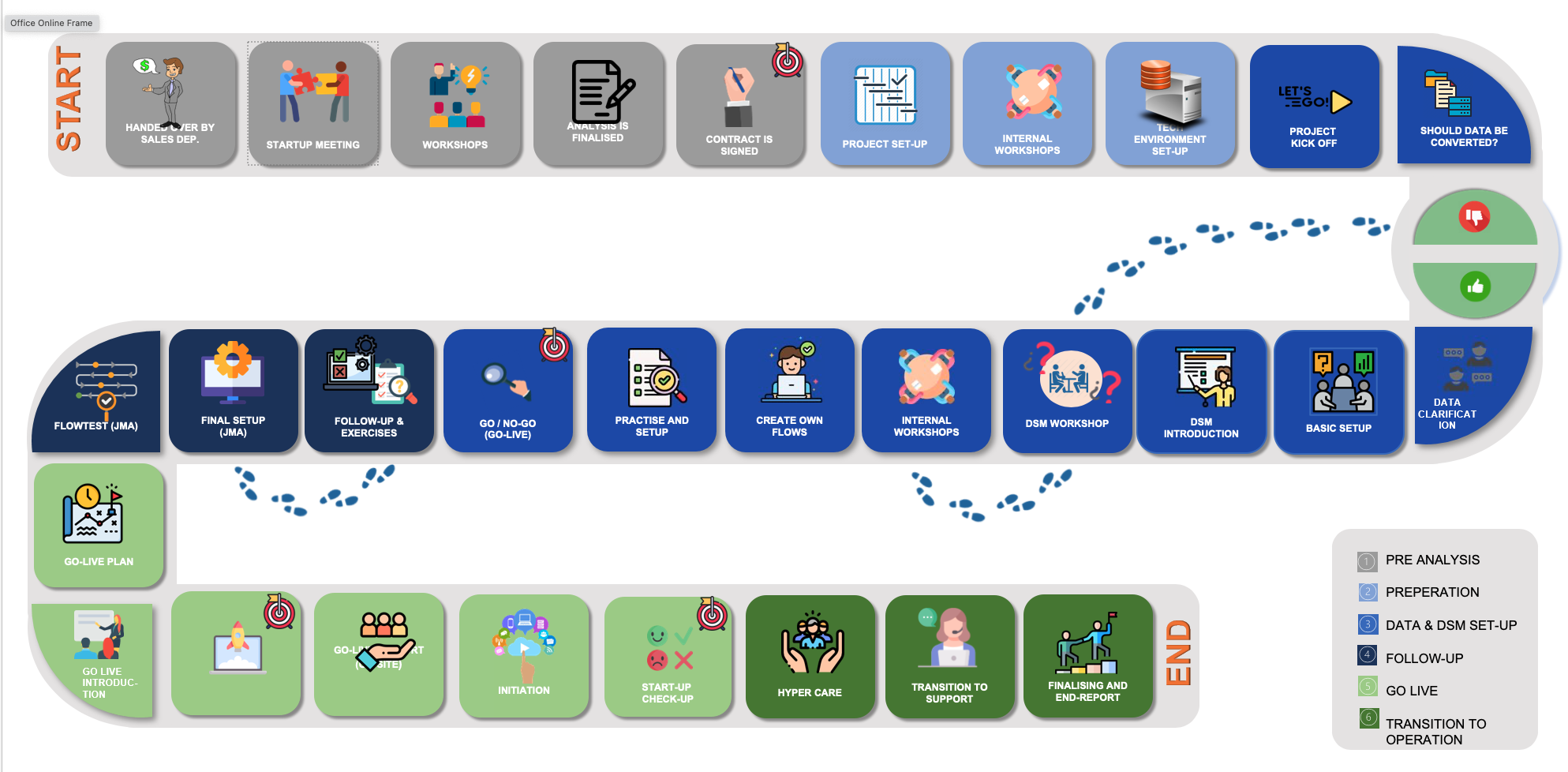
A switch to DSM is a switch to an efficient IT solution that optimizes current work processes in your company. DSM can be tailored to suit your needs and can also be expanded with a wide range of add-ons and accessories.
The good cooperation, which we always attach great importance to in the dialogue with you, requires open communication. In this way, we can best find the right solution.
In addition, such development and implementation of a new system involves a certain amount of resources and working time, so that the system matches your business as best as possible. Something we take into account at the start of the project and along the way.

In this part of the project, JMA visits the customer's company to find the right solution in collaboration with the customer
Here we find out together:
Based on these parameters, we can prepare estimates for the customer, which we review together before the final start of phase 1 - Planning. In many ways, the safest start to the project, as the customer gets a qualified estimate of the project with the preliminary analysis, and eliminates any doubts about prices and future processes. After review, the client can choose to approve the project based on these estimates.
Important: The project will only start if the green light is given in this phase.
The phase consists of project creation, where a "rough" plan is made for when and how the rest of the project will proceed.
Workshop days are agreed and booked.
Finally, a technical environment is created, which serves as testing during the project, but is also the environment used for operations when the system goes live.
In this phase we start with data and setup. All in collaboration with the customer, and in particular it is important that the customer is involved as much as possible.
Work is done in workshops, where the subject area managers meet and summarize their work with each other.
Milestones are described, which help to determine whether we maintain the expected progress.
In this phase, the remaining task pool and development are completed. JMA tests the DSM and ensures that everything is ready to "go live".
We start by holding an introductory course to DSM.
Go-live means that we switch off the customer's old IT systems and switch on the customer's new one. You should expect to be without an IT system for 2-3 days. On the Go-Live day and the following days, there are consultants on-site to help.
The first days are spent getting the most vital areas up and running. DSM modules and 3rd party modules are then started.
A number of follow-up days are agreed in the phase we call - "Hyper Care".
2 days are mandatory and are set aside to help with the first month-end.
In this final phase, the customer is gradually handed over to our support department.
The project is completed and a final report on the project is sent.
Subscribe to our newsletter